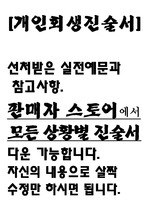미술교과서 시각디자인 표현 영역 분석 : 국민공통기본교육과정 중심으로
* 본 문서는 배포용으로 복사 및 편집이 불가합니다.
서지정보
ㆍ발행기관 : 한국미술교과교육학회
ㆍ수록지정보 : 사향미술교육논총
ㆍ저자명 : 강주희
ㆍ저자명 : 강주희
목차
1. 들어가며2. 시각디자인과 미술교육
3. 미술과 교육과정 시각디자인 표현 영역 분석
4. 미술교과서 시각디자인 표현 영역 분석
5. 결론
한국어 초록
디자인이란 우리의 일상생활에서 아름답고도 편리함을 주는 수단과 방법의 매개체이며, 그것을 이루는 실질적인 과정이라 할 수 있다. 그러나 디자인 교육이란 그렇게 전문적인 지식을 체득하고 학습을 하는 것이 아니다. 특히 초․중학교 디자인 교육은 기능 위주의 전문 디자이너를 키우는 것이 아니라 디자인에 대한 안목을 높일 수 있도록 하며, 디자인에 대한 기초 감각을 길러 줄 수 있는 교과내용이 교육적 측면에서 고려되어야 한다.본 연구에서는 우리나라와 미국과 일본의 시각디자인 교육 내용을 비교 분석해 보고, 제7차 교육과정을 바탕으로 제작된 초․중․고등학교 미술교과서의 시각디자인 표현 영역의 내용과 각 학년별 위계를 분석하여 우리나라 시각디자인교육의 현실을 인지함과 동시에 앞으로 나아가야할 바람직한 방향을 제시하고자 한다.
영어 초록
An art textbook becomes the core learning material to actualize concerned curriculum, and plays a pivotal role in terms of education. In view of this, it is very important to contribute to educational development by improving an external system and quality, as well as textbook contentDesign is a medium of the means and methods to provide an aesthetic aspect and convenience in our daily lives, and is also a practical process to do so. Hence, design education needs to be conducted in a direction for pleasant and comfortable human life.
.This paper is to analyze the features and system of visual design expression area and content system by each area within art textbooks. The purpose of this paper, therefore, is to present the problems of art textbooks, means to improve those problems and guidance plan of visual design expression area through the aforementioned analysis.
In Chapter Ⅱ, the concept, types, purpose and significance of visual design are described.
In Chapter Ⅲ, the visual design area of the 7th curricula in Korea is analyzed. Also, the contents of visual design area in the art text books of the United States and Japan is comparatively analyzed. In Chapter Ⅳ, the visual design expression area of the art textbooks for elementary, middle and high schools (1st year) including the "Joyful Life" (a subject) of the 1st and 2nd grade elementary pupils is analyzed. The analysis direction is analyzed through six point of views, such as four essential learning factors (expression theme, expression method, formative factor and principle and expression materials and tools) presented in the curriculum, figures and terminology analyses.
As a result of this study, the hierarchy and desirable direction between grades in visual design area are as follows:
First, the subject matters need to be diverse and many production processes or expression methods should be presented by emphasizing the regional and school features regarding art textbooks.
Second, concerning the vocabulary used in the textbooks, demonstrative vocabulary and duplication of similar contents need to be avoided.
Third, the curricula should be programed to show the hierarchy between grades in using materials and tools. By avoiding repetitions students could handle the various materials and tools.
Forth, textbooks are admitted to be published by many kinds of publishing companies. To minimize the differences of the level of textbooks published by different publishing companies, the expert writers should be guaranteed and the common standards should be established.
The talent in visual design should be developed starting elementary school in a direction to foster excellent design consumers in terms of visual design education.
참고 자료
없음"사향미술교육논총"의 다른 논문
 다매체순환표현을 통한 11세 전후의 미술표현 위기 극복에 관한 연구21페이지
다매체순환표현을 통한 11세 전후의 미술표현 위기 극복에 관한 연구21페이지 분청사기 이해지도에 관한 연구22페이지
분청사기 이해지도에 관한 연구22페이지 단계적 입체표현 수업 방안22페이지
단계적 입체표현 수업 방안22페이지 감상능력 신장을 위한 미술관 활용 방안 연구34페이지
감상능력 신장을 위한 미술관 활용 방안 연구34페이지 초등 미술교육과정에서 시각문화 수용에 관한 고찰25페이지
초등 미술교육과정에서 시각문화 수용에 관한 고찰25페이지 후기회화에 나타난 ‘보태니컬아트’의 형상화에 관한 연구22페이지
후기회화에 나타난 ‘보태니컬아트’의 형상화에 관한 연구22페이지 어린이 미술에 나타난 상징의 이해와 그것의 교육적 의미 연구 39페이지
어린이 미술에 나타난 상징의 이해와 그것의 교육적 의미 연구 39페이지 아동화에 대한 인지과학적 분석과 미술교육의 중요성에 대한 연구16페이지
아동화에 대한 인지과학적 분석과 미술교육의 중요성에 대한 연구16페이지 정서지능 신장을 위한 학습 모형 연구18페이지
정서지능 신장을 위한 학습 모형 연구18페이지 기호학에 의한 미술작품 읽기에 관한 연구20페이지
기호학에 의한 미술작품 읽기에 관한 연구20페이지




















